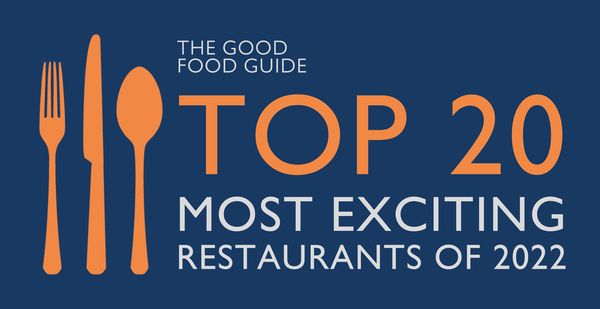‘You could drive through, blink and miss it,’ confessed a local inhabitant of one of England’s smallest towns, Bruton, on the banks of Somerset’s river Brue between Yeovil and Frome. But to do so would be to miss the surprisingly cosmopolitan pleasures of a town whose medieval history lies in plain sight; whose narrow streets are lined with stone-and-stucco cottages; and whose idiosyncratic high street conceals a host of ancient ginnels and snickets.
A curious visitor will want to venture along each one to seek out its prize, with the jackpot being the view of the stunning 16th century dovecote on Lusty Hill, whose stark outline broods over the rural landscape. Listed in the Domesday Book as Briuuetone, meaning ‘vigorously flowing river’, Bruton has enjoyed a burst of popularity since the opening of the world-class Hauser & Wirth gallery in 2012, housed in the restored Durslade farmhouse on the town’s outskirts. It has even earned a reputation as one of the hippest places to live in Britain, with a gaggle of celebrities reportedly enjoying its manifold attractions. But let’s not skip ahead, for there is much to explore before you get your art – or your hipster – on.
Visitors should expect to get intimate with fellow pedestrians as they navigate the slender pavement of the town’s main thoroughfare, but when the passersby are as smiley as Bruton’s, you’ll take it in your stride. Everything shouts community here, from the cooperative organic shop to the charming walled shared gardens – but if you’re worried there’s a whiff of patchouli about it all, then fear not: the vibe is distinctly modern, with an artsy undercurrent that feels bang up-to-date.
Walking from station to town, it would be a mistake to underestimate the Bean Shot Café, housed in an unassuming industrial unit. Boasting of his ‘bloody good coffee’ on a blackboard outside, the owner of this Aussie-run roastery will give you tasting notes on the day’s available blends - our Bella blend was a mix of Colombian and Ethiopian beans, with notes of stone fruits. Sit under a ceiling lined with bean sacks and within sight of the roastery, taking care not to fall foul of the swear jar that demands ‘10p for any mention of instant coffee’.
Next door is the Bruton Art Factory, a brilliant initiative supporting local and visiting artists alike, and from there you’re within sniffing distance of the Godminster Shop, where truckles of creamy Godminster cheddar from the local dairy are ripe for tasting – and for buying.
Any stay in Bruton should take in the high street’s Sexey’s Hospital almshouses. Built in 1630 its courtyard and tiny, Grade-I listed chapel is open to the public and provides a place for quiet reflection away from the town’s cheerful bustle.
Continue the self-improvement with lunch at the delightfully boho Green Monkey vegetarian café, where a generous bowl of rustic Tuscan bean soup comes with a side order of world music and a warm welcome from ebullient owner Vincent. Such is the Green Monkey’s success it now opens for dinner on Friday nights, vying for popularity with Matt’s Kitchen, just a few doors along, where suppers are served in the chef’s own house and might include smoked pork belly with spicy crackling. Take note: you’ll need to book weeks in advance.
At the heart of the town is Bruton’s fashionable At the Chapel, a hotel that boasts a restaurant, wine shop, café and a sensational bakery whose majestic pizza oven dominates the medieval chapel’s entrance. We lingered at the window, eyeing the fragrant heaps of pastries. To stay in one of the chapel’s boutique rooms is to be rewarded with a bag of buttery croissants, hung on your door each morning. What could be more indulgent that donning a fluffy dressing-gown, peeking around the door to grab your morning pastries, and scurrying back to bed? The rooms’ well-stocked fridges include butter and jam for your breakfast, and a miniature bottle of butter-yellow milk from the local dairy for your coffee.
Dinner in the chapel’s handsome galleried restaurant brings temptation in the form of miniature cauliflower arancini, and pizzas with anchovies, capers and melted onions, while at the other end of the scale – and the town – Truffles is a cheerful, family-run bistro with winning service. We enjoyed the snug embrace of the downstairs dining room for a simple supper of steak-frites and a glass of Sancerre. ‘It’s a bit like your aunt’s living room,’ said one approving diner to her partner. And it’s none the worse for it.
You’ll want a good stretch of time to explore the Hauser & Wirth gallery, which is well signposted and can easily be reached on foot over a babbling brook just by the railway bridge. (Scamper up the incline on the way to get a closer look at the roofless limestone dovecote, standing sentry at the top.) The gallery’s impressive Threshing Barn is one of five airy, purifying gallery rooms that link together around landscaped gardens to provide a ‘continuous spatial experience’ for exhibitions of innovative contemporary art and architecture.
It would be remiss of any visitor with a foodie bent not to stop in the gallery’s Roth Bar & Grill. You can sit in the neon-chandeliered dining room, or idle away an hour at the long steel bar, illuminated by stage lights and dominated by a technicolor installation of paint-daubed bric-a-brac. An electric piano at one end hints at what the evening might bring, while cocktail-shaking bar staff address each other as ‘blood’, and sport important haircuts.
The full menu is available at the bar, and a spicy, roasty-toasty cauliflower salad was texturally brilliant, shot through with toasted cumin seeds, sweet sultanas and a dollop of yoghurt. Equally as welcome is a doorstopper toasted cheese sandwich with Westcombe Cheddar from the nearby family-run artisan dairy. You might be forgiven for mistaking the salt room at the entrance for a Damien Hirst installation. The glass locker is hung with pig carcasses, wild deer and homemade sausages, and lined with more than 500 hand-cut Himalayan salt bricks. ‘This is not an art work,’ we are told, ‘it is the art of food’. A fitting end to our culinary journey in the west country.




